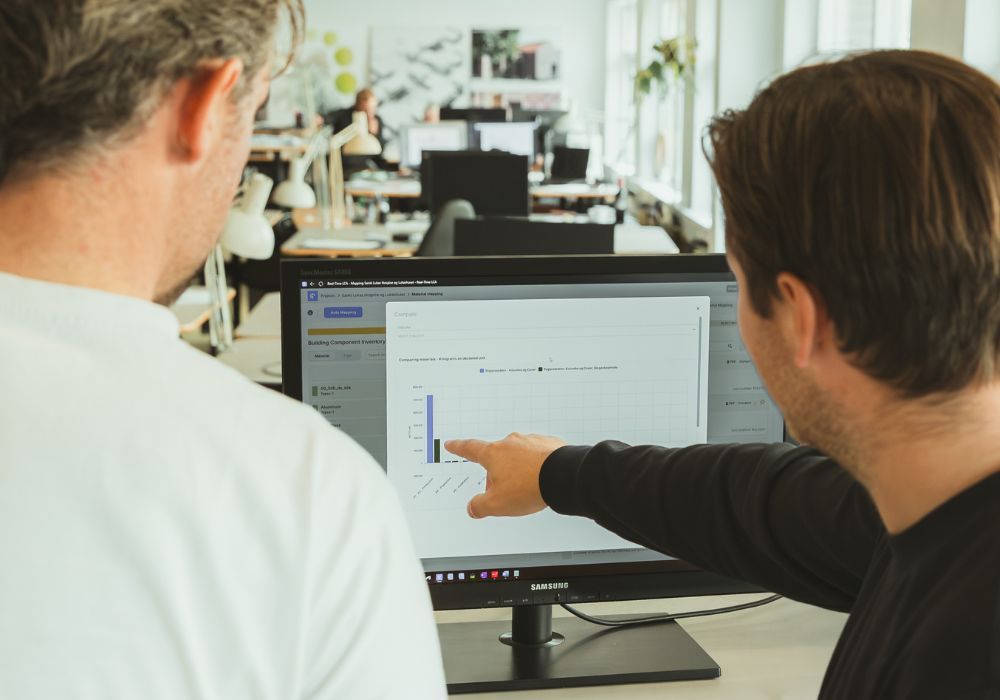
With Real-Time LCA, the design studio has a tool that fully automates the LCA process - from quantity extraction to climate analysis - and makes it possible to work efficiently with documented sustainability.
From manual work to automated analyses
Before Creo implemented Real-Time LCA, LCA calculations were done manually and outside of Revit – separate from the rest of the design workflow. It required many clicks, repeated measurements and a solid technical overview.
"It has previously been difficult for us to work with LCA, as we had to do many manual workflows. Often we only got a real picture late in the design process," says Simon Borg, CEO at Creo Arkitekter.
The need for a more efficient and flexible solution led Creo to look for a tool that could automate the LCA calculations and integrate directly into their existing workflow. They chose Real-Time LCA – a platform where Revit quantities are automatically linked to material data, allowing analyses to be performed quickly and continuously as a natural part of the design process.
Auto-Mapping saves time and minimizes errors
One of the features that quickly made a difference in Creo was “Auto-Mapping”. When the design studio’s known building elements and materials are named consistently in Revit, Real-Time LCA can automatically recognize them and match them with the correct environmental data in the database. This means that Creo no longer has to select materials or link them to LCA profiles manually.
Creo has built an internal library of named construction types and components that Real-Time LCA can recognize across projects. It is a strategic investment that both saves time and makes it easier to involve multiple disciplines in the work.
Ease of use promotes dissemination
Real-Time LCA has made it possible for different professional groups in the company to work actively with the LCA calculations. This means that LCA calculations are no longer something that happens in a separate process. Architects, engineers, and project managers can now build scenarios, compare material choices, and document climate footprints directly within their projects – at the phases where it matters most for both design and collaboration with developers.

Better collaboration with developers and consultants
Simon Borg highlights the difference that Real-Time LCA has made in the dialogue with external stakeholders – not least developers and consultants. With access to ongoing and documented climate data, Creo can now have more informed and data-driven discussions about material selection, CO₂ footprint and economics – already in the design phase.
“When we can document the consequences of our choices early on, the conversation with builders, general contractors and consultants becomes better. We can be more precise and show concrete data, which is important when balancing ambitions with economics and design. We become better equipped to make choices – and to explain them,” he says.
Real-Time LCA is therefore not only an internal analysis tool, but also plays an active role in tender materials, collaborative workshops, and documentation for authorities and certification schemes. It also strengthens Creo's position in tenders and competitions, as they can show how they work data-driven with sustainability - making the studio more competitive and trust-worthy.
Less complexity & more time for architecture
The implementation of Real-Time LCA has been done in close collaboration with NTI, who has assisted Creo with both consulting and technical setup. According to Simon Borg, the dialogue has been crucial for a smooth start-up and for the solution to be quickly put into use on specific projects.
By removing the technical and practical complexity, Creo has given its employees more time for what matters: creating good, responsible architecture. This allows the design studio to work more exploratory, test more design alternatives, and maintain quality - without compromising on documentation or deadlines.

